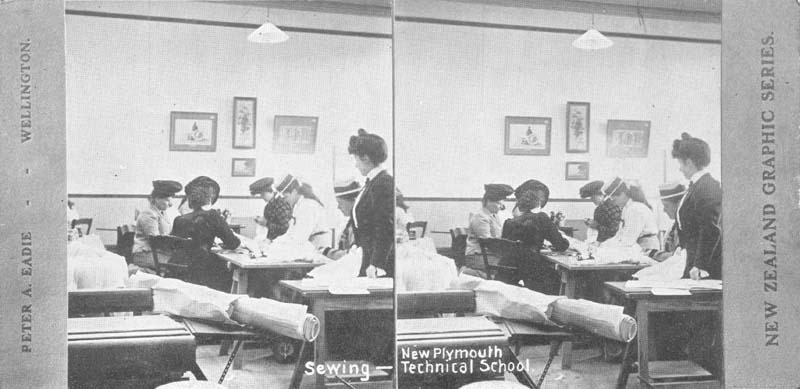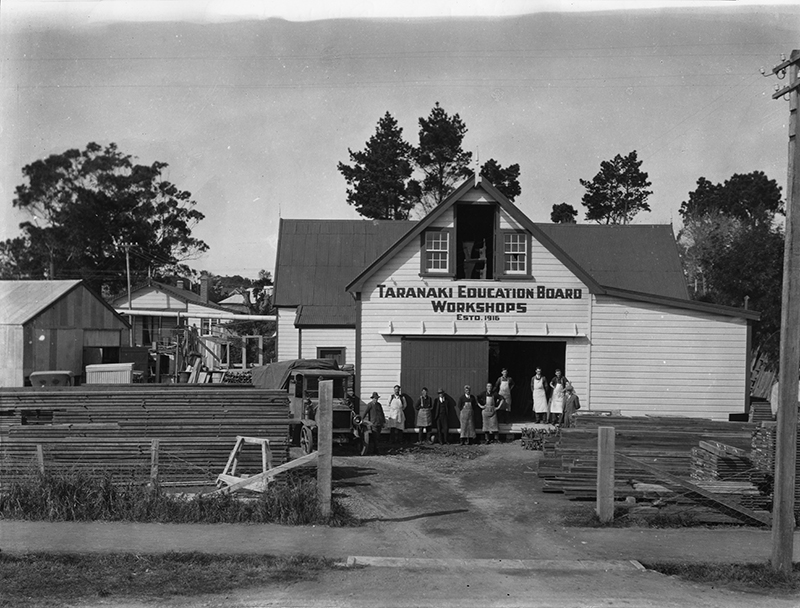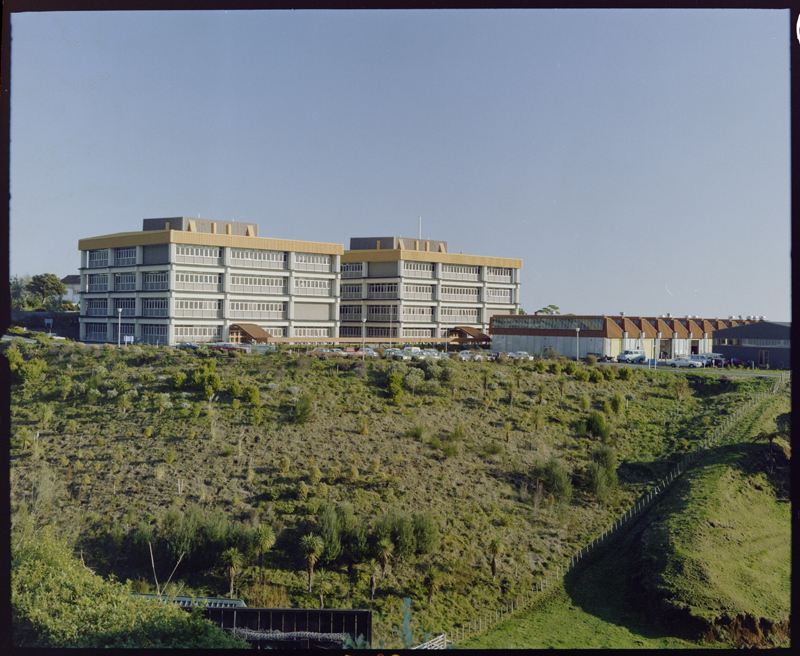


In July 2006, the New Plymouth Technical School building turned 100 years old. The forerunner to the Taranaki Polytechnic, now Western Institute of Technology in Taranaki (WITT), it was set up by men of foresight and was once a place to be particularly proud of. When the Polytechnic opened in 1972, it was built on the sturdy foundations of New Plymouth's Technical School.
The word Polytechnic was first used by Wellington Polytechnic, then Otago, Nelson and Southland. Taranaki was the fifth place of learning to use it. The Polytechnic's aim was to prepare students for entry into a career, provide training for advancement, offer opportunity for re-training and encourage a desire for continued learning. It also wanted to meet the needs of the community and for years the Polytechnic fulfilled all these aims.
To trace the original roots of continued education in Taranaki, we have to go back to the first arrivals to the district. Though Frederic Carrington had marked his original surveyed plan for the township of New Plymouth with a spot for a school, it would be many years before one was built.
Meanwhile, settlers who wanted to reproduce the best minds that Britain had to offer knew education was the key. Academics turned to teaching, often in their own homes. Pupils anxious to improve themselves signed up for classes if they could afford it.
Yet, despite the Industrial Revolution that was taking place in Britain, prior to 1860 there was little in the way of tuition for practical skills, such as black smithing, wheel wrighting, bush craft and horse breeding. Though some instruction was given in axemanship, saw doctoring and carpentry, there was nothing in the way of apprenticeship training.
In 1874, the New Plymouth Provincial Council set up two Education Boards, one in New Plymouth and one in Pātea. Their job was to co-ordinate education, and a law was passed to give these boards control over the building and running of schools.
Early in 1877, the New Plymouth Education Board applied to the Government for a loan to build its first district high school, which was called New Plymouth Boys' High School (NPBHS). But because of inadequacies and varying standards in education throughout the country, the Government passed an Education Act. Implementing central Government funding for all non-church schools rather than sticking to the old regime of local funding through property rates would have a major effect on New Zealand education.
It was now up to the New Plymouth Education Board, like many around the country, to decide how funds were spent and on which curriculum. As usual, the emphasis fell on classic subjects like maths and languages, and designed for entry into university. But to enter high school, pupils had to pay set fees, which meant higher education was often reserved for a privileged few. The Seddon Government (1893-1906) rectified this by introducing free places for poorer students with potential. In 1895, the Elementary Technical Instruction Act was passed, to provide technical tuition for everyone and these continue today as manual classes.
By the turn of the century, technical colleges had been set up and were being run entirely separately from high schools. This was due almost entirely to the tireless efforts of Mr Hoben, Minister of Education under Vogel's government, who was president of the Mechanics Institute in Timaru.
Parents were now able to send their sons and daughters to high school - or to technical school where there were no fees to pay. Technical colleges offered commercial and home craft classes for girls, and building, engineering, electrical and draughting trades for boys, alongside core subjects like english, chemistry, physics, bookkeeping and art.
In 1903, the New Plymouth Technical School opened in the old Central School buildings on Lemon Street, while a new custom-built school took shape around the corner on Liardet Street. Originally the Marsland Hill Army Garrison's training ground, it was one of the few flat pieces of city ground not already built on. On 25 July 1906, the foundation stone and plaque was laid by Henry Faull. The ribbon was cut on the classrooms the following year and on the workshop block the year after.
During the 1900s, technical schools flourished. New Zealand was seen as a world leader in the field, and by the start of World War One, New Zealand-educated soldiers were being sought as field engineers.
The standard of equipment used for training, even in the New Plymouth Technical School was very high. The milling machine, for example, had been a 'Denbeigh' bought from England. It would see seven decades of service before being sold in 1975 to a local firm, where it continued to work for years.
In 1927, the New Plymouth Technical School and NPBHS joined forces to become the first combined school in the country. Combined schools continued to be formed in the smaller centres up until World War Two. An agricultural course was added and the school become one of the biggest boarding schools in New Zealand and was listed in British Magazines.
The end of World War Two meant a growing need for more apprentices, and those on the apprenticeship scheme were urged to take advantage of adult evening classes to upgrade their skills. The pride in trade training in Taranaki was so great that Roy Hawke, Commissioner for Apprenticeships, celebrated it with Taranaki Apprenticeship Week, which all employers and apprentices took part in.
In 1964, the New Zealand Certificates of Engineering helped bridge the gap between tradesmen and professionals, and soon the New Zealand Certificates were added to bring in further occupations. New Zealand Certificates continued alongside Technician's Certificates: New Zealand Certificates were five years study while Technical Certificates were three. The name New Zealand Qualification Authority stayed until later 1970s and into the 1980s, when it was changed to Authority for Advanced Vocational Awards (AAVA).
After almost 70 years of success, the Taranaki Technical School became the Taranaki Polytechnic, a name designed to show the many and varied courses available. In 1970, the Education Department purchased a slice of land on Bell Street to be used for expansion and by 1974, two pre-fabricated buildings were up, followed quickly by a workshop block.
Time was of the essence, as the workshop was needed to train welders for the proposed gas pipeline from Kāpuni to the New Plymouth power station, after it was decided to run it on gas, not coal, and also for the extension of the existing pipeline north.
The Think Big energy projects of the 1980s, first in Waitara Valley and then at Motunui, had a considerable effect on the Polytechnic. For the first time ever, the Education Department was persuaded to let an outside contracting firm take over its workshops, and kit them out with their own machines, to enable the energy projects to be built on time and under budget. The workshops involved were always under the control of the Polytechnic and all overheads, such as power for the welders, were paid for by the Polytechnic.
The operation was a joint one between Bechtel and the Polytechnic, as Bechtel wanted an off-site training centre. Bechtel provided the equipment, consumables and some staffing to meet the additional costs, which were well above the operational grants that the Polytechnic received from the Education Department. Consequently, workshops ran on double shifts, and at the end of the contract, the Polytechnic kept the machinery, some of which was transferred to other institutes by the Education Department. In 1981, the workshop was replaced by a new pressure pipe welding shop.
The Taranaki Polytechnic was both of its time and before its time - and it was gratifying for those involved to see the initial concept and facility fly to very successful heights.
Puke Ariki Heritage Collection: New Plymouth Technical College
LinkPlease do not reproduce these images without permission from Puke Ariki.
Contact us for more information or you can order images online here.